What Makes Arabic Grammar Unique? A Clear Introduction

Arabic is one of the most beautiful and richly structured languages in the world. With its deep historical roots, poetic nature, and precise expression, Arabic continues to fascinate learners from across the globe. One of the key reasons why Arabic stands out among world languages is its grammar. But what exactly makes Arabic grammar unique? In this clear introduction, we’ll explore the fascinating features of Arabic grammar that make it unlike any other language, and how understanding its structure can deepen your appreciation for the language.
Whether you’re a complete beginner or someone who has already taken your first steps in learning Arabic, this blog will give you insights that will make you see Arabic grammar in a whole new light. And if you’re looking for structured and professional guidance, Al Arabiya Institute is one of the best websites to learn Arabic online — offering high-quality courses with the best prices and free trial lessons to get you started.
1. The Root System: The Heart of Arabic Vocabulary
One of the most unique features of Arabic grammar is its root system. Almost all Arabic words are built from triliteral (three-letter) roots, which convey a core meaning. From one root, you can derive dozens of related words.
For example, the root k-t-b (كتب) relates to writing:
-
kitāb (كتاب) = book
-
kātib (كاتب) = writer
-
maktab (مكتب) = office
-
maktūb (مكتوب) = written
This root system makes vocabulary learning both efficient and logical. It shows how Arabic grammar is unique in connecting meanings through patterns and roots rather than isolated vocabulary lists.
Learning these patterns becomes much easier with a qualified teacher who can guide you step-by-step. That’s why many students choose Al Arabiya Institute, where expert instructors help learners unlock these grammar patterns through modern and engaging methods.
2. Dual Forms and Gender Distinctions
Most learners are familiar with singular and plural forms in language, but Arabic introduces a special third category: the dual form. Arabic distinguishes between:
-
Singular: واحد (one)
-
Dual: اثنان (two)
-
Plural: ثلاثة فأكثر (three or more)
For example:
-
كتاب (kitāb) = book
-
كتابان (kitābān) = two books
-
كتب (kutub) = books
This grammatical distinction adds nuance to expression and is part of what makes Arabic grammar unique.
Moreover, Arabic grammar consistently marks gender. Every noun is either masculine or feminine, and verbs and adjectives must agree with the gender and number of the noun. This kind of agreement system is more detailed than in English and many European languages.
If you’re intimidated by these details, don’t worry. At Al Arabiya Institute, our courses are designed to break down these concepts with clarity and simplicity, so even complex topics become easy to master.
3. Verb Forms and Derivational Patterns
Arabic verbs operate through a templatic system known as verb forms (الأوزان). From a single root, various verb forms (Form I to Form X and beyond) are created to convey different nuances of meaning such as causative, reflexive, or reciprocal actions.
Take the root ʿ-l-m (علم), meaning knowledge:
-
ʿalima (عَلِمَ) – he knew (Form I)
-
ʿallama (عَلَّمَ) – he taught (Form II)
-
taʿallama (تَعَلَّمَ) – he learned (Form V)
-
istaʿlama (اسْتَعْلَمَ) – he inquired (Form X)
Each form follows a different pattern, allowing learners to form a wide range of verbs from one root. This system makes Arabic grammar unique and structurally elegant.
Understanding and using these verb forms effectively can be challenging without guided learning. That’s why many learners trust Al Arabiya Institute, where lessons are tailored to help you master these forms with real-life examples and interactive exercises.
4. The Case System in Arabic Grammar
In Classical Arabic and Modern Standard Arabic (MSA), nouns and adjectives reflect their grammatical role in the sentence through case endings:
-
Nominative (مرفوع): subject of the sentence
-
Accusative (منصوب): object of the verb
-
Genitive (مجرور): object of a preposition or second part of an idāfa
For example:
-
الطالبُ ذكيٌّ (al-ṭālibu dhakiyyun) – The student is smart.
-
رأيتُ الطالبَ (raʾaytu al-ṭāliba) – I saw the student.
-
ذهبتُ إلى الطالبِ (dhahabtu ilā al-ṭālibi) – I went to the student.
These vowel endings change based on the noun’s role, a feature that makes Arabic grammar unique and highly structured.
While MSA case endings are often dropped in casual speech, understanding them is crucial for reading classical texts, Qur’anic Arabic, and formal writing. At Al Arabiya Institute, you can learn how to use the case system confidently in both speech and writing.
5. The Idafa (الإضافة) Construction
One of the standout structures in Arabic is the idafa construction — a way of expressing possession and relationships between nouns. This construct is unique because it replaces the use of “of” in English.
For example:
-
baytu al-mudarrisi (بيتُ المُدرِّسِ) = the teacher’s house
-
maktabatu al-jāmiʿa (مَكتَبةُ الجامعةِ) = the university’s library
The structure requires attention to both word order and case endings. Mastering it is essential for fluency in reading and comprehension — another area where Arabic grammar is unique.
Students often find idafa confusing at first, but with regular practice and expert guidance from institutions like Al Arabiya Institute, you can learn to use it naturally.
6. The Intricate System of Pronouns
Arabic features a broad set of attached and detached pronouns, including suffix pronouns that attach directly to verbs, prepositions, and nouns.
For example:
-
كتابي (kitābī) = my book
-
رأيته (raʾaytuhu) = I saw him
-
لها (lahā) = to her
These pronoun systems are very different from English and require careful study, but they allow for incredibly compact expression. This compactness and inflectional richness are part of what makes Arabic grammar unique.
7. Word Order Flexibility
Unlike English, which generally follows Subject-Verb-Object (SVO) word order, Arabic allows both SVO and VSO (Verb-Subject-Object) structures.
For example:
-
أكلَ الولدُ التفاحةَ (akala al-waladu al-tuffāḥata) = The boy ate the apple.
-
الولدُ أكلَ التفاحةَ (al-waladu akala al-tuffāḥata) = The boy ate the apple.
Both sentences are grammatically correct, but the emphasis can change depending on the word order. This flexibility is another reason why learners find Arabic grammar unique — it gives you more expressive freedom.
With expert training, like what’s offered at Al Arabiya Institute, you can learn to use Arabic’s flexible syntax to your advantage in speaking and writing.
8. The Magic of Arabic Sentence Structure
Arabic distinguishes between nominal sentences (starting with a noun) and verbal sentences (starting with a verb). Nominal sentences usually express states or descriptions without the verb “to be,” which is omitted in the present tense.
For example:
-
الجو جميلٌ (al-jaww jamīlun) = The weather is beautiful.
-
أحمدُ ذكيٌ (Aḥmad dhakiyyun) = Ahmad is smart.
There’s no need for a verb like “is” — a feature that makes Arabic grammar unique and compact.
Why Arabic Grammar is Worth the Effort
While Arabic grammar may seem complex at first glance, its structure is logical, elegant, and consistent. Understanding what makes Arabic grammar unique allows learners to unlock the beauty of the language, whether reading ancient texts or holding a conversation in Modern Standard Arabic.
But grammar can’t be learned in isolation — it needs context, interaction, and practice. That’s why thousands of students worldwide choose Al Arabiya Institute. Our online Arabic courses are built to help you grasp these unique grammar features step-by-step, with expert teachers and clear materials. We offer:
-
Courses for all levels
-
Flexible learning schedules
-
The best prices available
-
Free trial lessons so you can try before you commit
Final Thoughts: Celebrate the Uniqueness of Arabic Grammar
To truly appreciate the Arabic language, you need to understand its grammar — and what makes Arabic grammar unique is also what makes it so beautiful and rewarding to learn. From its root system and verb forms to flexible syntax and deep structure, Arabic grammar offers learners a new way of seeing language.
And remember, you don’t have to navigate this journey alone. At Al Arabiya Institute, we’re here to guide you through every step with online Arabic courses that are affordable, professional, and effective. Sign up for a free trial lesson today and discover just how enjoyable learning Arabic grammar can be.







